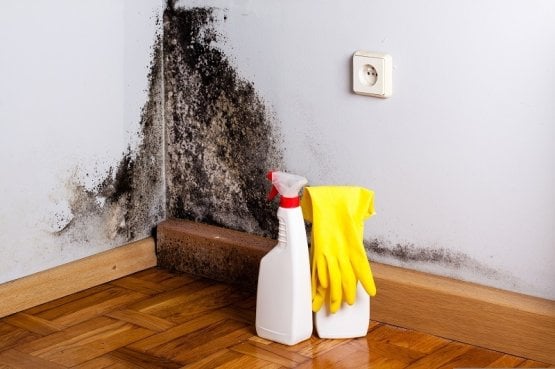
The tragic death of 2-year-old Awaab Ishak last year from mould inhalation has shone a light on the dangers of mould in our homes and rental properties, in particular. Such deaths, I am glad to say, are rare but it is estimated that there are around 450,000 households in the UK that have problems with condensation and mould. And, with many people turning down their heating this winter, those numbers will only get worse.
The most common moulds are - Cladosporium and Alternaria fungi – and contact with their spores can cause a variety of symptoms, from sneezing to runny noses, red eyes and skin rashes. For many of us, however, there are no symptoms at all, but for the very young and for those with respiratory or allergy issues, the consequences can be more serious.
What Should you do?
You should always treat mould the second it appears, otherwise, it will rapidly spread. But don’t just paint over it, as it will soon come straight back. Nor should you use a brush because all the spores will go into the air. The best thing to do, if your walls are white, is to scrub the area with a solution of bleach and water. Mix 4 parts of water with one part bleach, then add a splash of washing-up liquid and put it into a spray bottle. Thoroughly spray the areas and then scrub using a kitchen scourer until all the mould has gone. Repeat if necessary. Try not to scrub too hard, though, as you may remove a layer of paint. You could also use a specialist mould spray, such as the excellent HG Mould Spray. However, if your walls are coloured, bleach is not recommended. Instead, use vinegar and mix it 3 to 1 with water. Or just use soap and warm water.
Once you have treated the mould, you will then need to deal with its underlying cause. Condensation is the prime suspect and is very common in our homes. It is the result of warm, moisture-laden air coming into contact with a cold surface such as an external wall or a window.
Fortunately, there are quite a few things you can do about it, most of which involve improving ventilation. The easiest thing to do, though, is to either turn up the heating or keep it on permanently, but at a low level, which will keep the air far drier than constantly letting it swing between hot and cold. In these days of high energy bills, that may not always be practical. A far cheaper option is to open a window or, better still, two, to create a decent through draught. It is especially effective if you are having a shower or boiling some pasta in the kitchen at the time.
And, even if it’s cold outside, a quick blast of fresh air will really help. If you have extractors, use them but, if not, it’s worth considering having them installed in your bathrooms or your kitchen. Alternatively, you could try using a moisture absorber, such as Unibond’s Aero 360 system. These draw in any ambient moisture, which you then pour away. They are small enough to sit on a shelf or windowsill, cost around £10-£12 and will last for around three months. In the interim, it is also worth regularly wiping down any damp areas with a dry cloth. It will soon get damp again but should help keep any mould at bay.
Another area to pay careful attention to is windows, especially single-glazed ones, as their cold glass provides the perfect surface for condensation to gather on. It’s expensive but replacing them with double or treble-glazed units will reduce both your condensation and your heating bill. Tumble dryers are also a major cause of condensation, so ensure they are either vented externally or you can replace them with a condenser-dryer, which reclaims the wastewater. It may save you money, but drying clothes on racks or radiators will make your condensation problems considerably worse.
Mould is not just confined to kitchens and bathrooms, it can also occur in bedrooms and sitting rooms. In those areas, avoid putting any large items of furniture up against external walls, which is where condensation typically forms, to ensure they get good airflow. And, as with all other rooms, upgrade any single-glazed windows. It also helps if you close the doors when you are cooking or showering, so you don’t let the extra moisture in the air into the affected room.
For those needing a ‘’whole house’ solution, a Positive Input Ventilation (PIV) unit may be just what you are looking for. They work by continually taking clean and fresh air from the loft and pumping it into the rest of the property. The increased air pressure forces out any damp, stale air through gaps in the building’s structure, and will considerably reduce condensation. They cost around £700 to £1,000 to install but are very cheap to run.
Moisture can, of course, also come from an external source, so, check your home is leak-free and any guttering is cleared and working properly. And finally, if you have a flood of any kind or your condensation is particularly bad, you should consider using a dehumidifier until the moisture levels have been reduced to manageable levels
If you are a landlord and are thinking about expanding your portfolio, why not give us a call at
EasyMove

